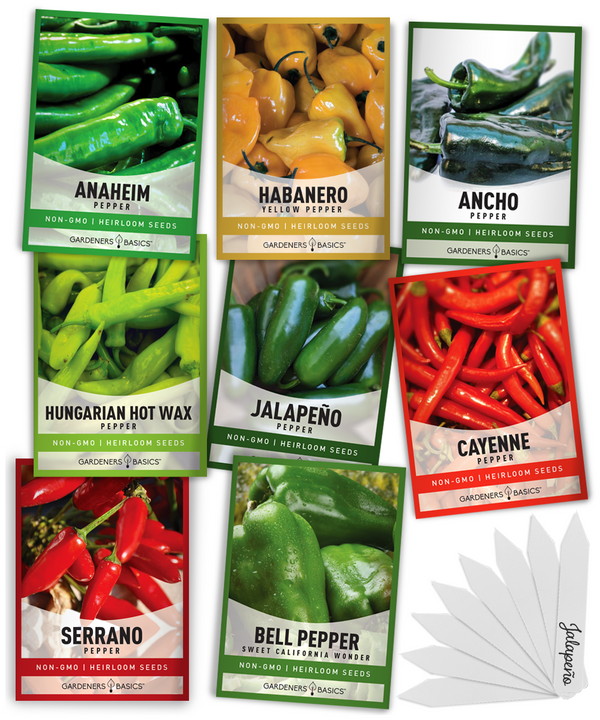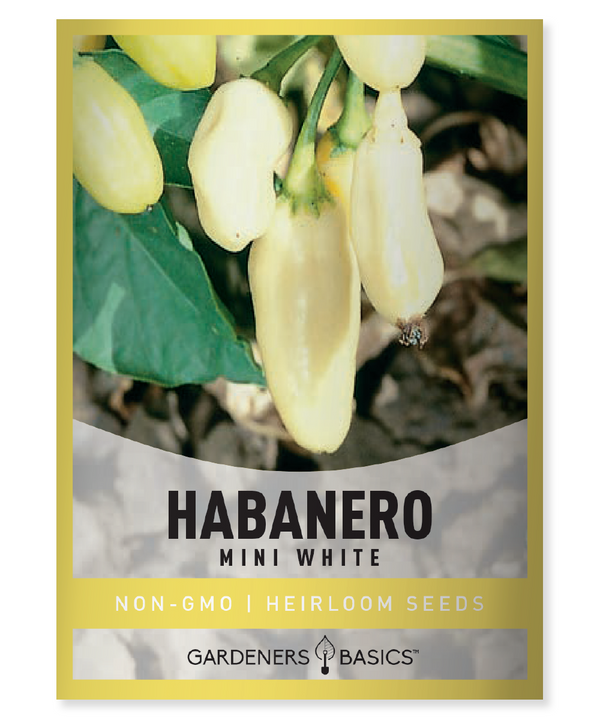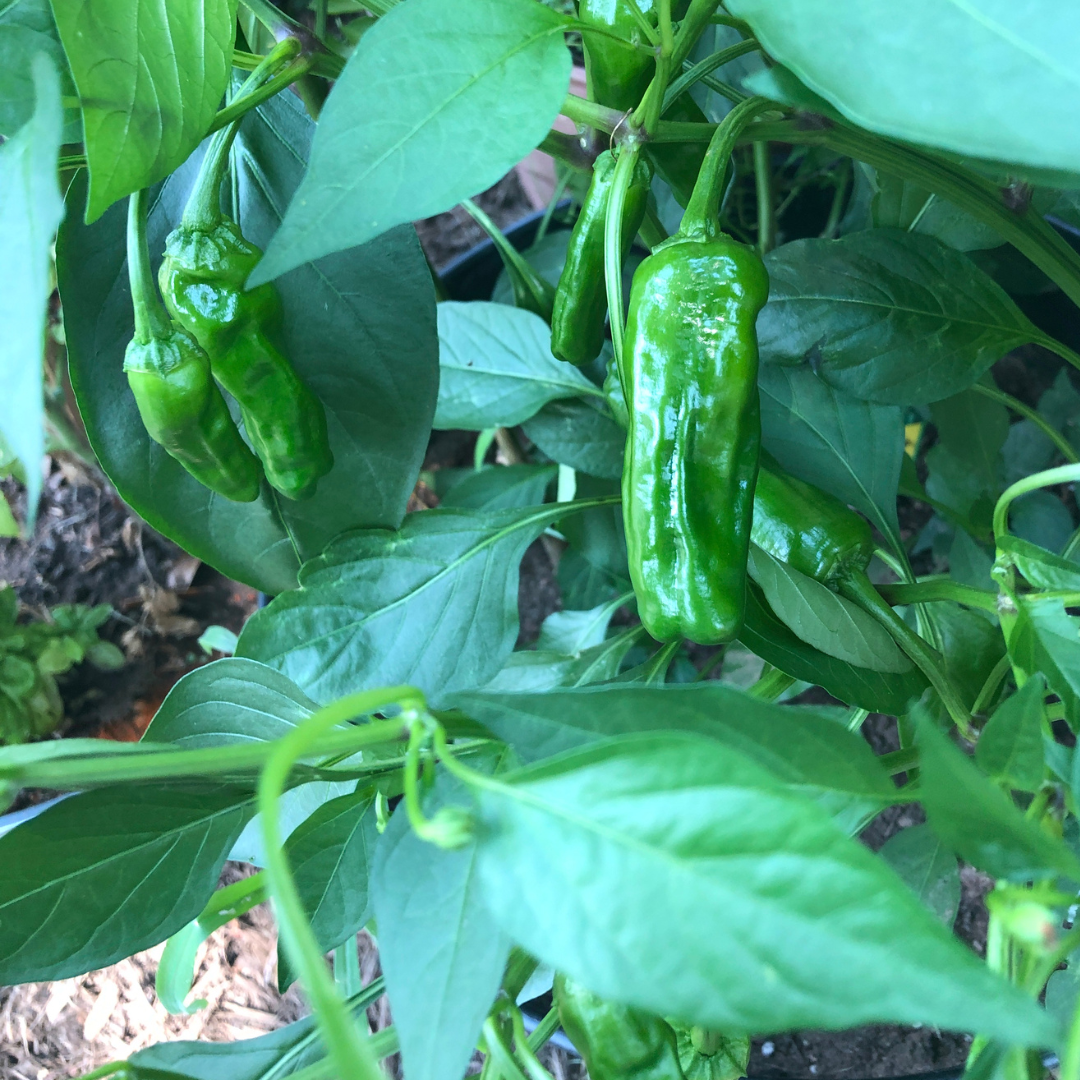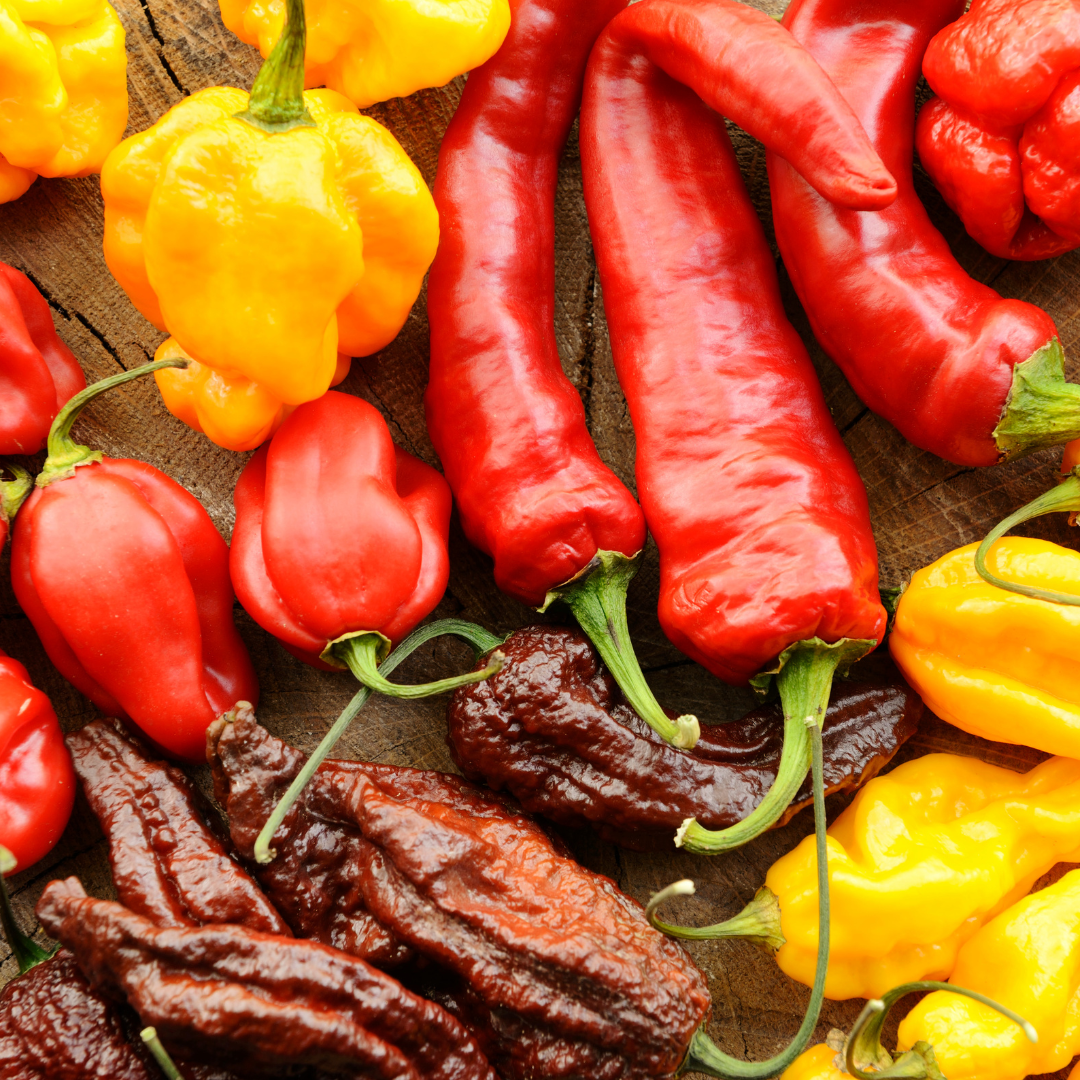If you're a fan of hot peppers, there's a good chance you've heard of habanero peppers. These fiery little peppers pack a serious punch, with a Scoville heat unit rating that can range from 100,000 to 350,000. If you're looking to grow your own habanero peppers, here's what you need to know on how to grow habanero peppers.
Getting Started: Habanero Seeds
The first step in growing habanero peppers is to obtain habanero seeds. You can purchase seeds from a garden center or order them online. When selecting seeds, look for fresh seeds that are plump and firm. Avoid seeds that are wrinkled or discolored, as they may be old or damaged.
It's essential to choose the right variety of habanero pepper seeds for your garden. There are many different types of habanero peppers, each with its unique flavor, heat level, and growth habit. For instance, the "Red Savina" habanero is one of the hottest peppers in the world, while the "Chocolate Habanero" has a smoky, fruity flavor. Some of the most popular varieties of habanero peppers include the "Caribbean Red," "Orange Habanero," and "White Habanero."
Pepper Seed Assortment | 8 Variety Pack

$15.95
Pepper Seeds For Planting | 8 Varieties Pack, Jalapeno, Habanero, Bell Pepper, Cayenne, Hungarian Hot Wax, Anaheim, Serrano, Ancho Seeds For Gardening, Non-Gmo, heirloom seeds 8 VARIETY PACK - Hot and Sweet Pepper Seeds included in the assortment. Jalapeno, Habanero,… read more
Once you have your habanero seeds, it's time to prepare to plant them. Start by filling seed trays with potting soil. You can also use peat pots or other biodegradable containers. Make sure to moisten the soil before planting the seeds.
Next, plant one or two seeds per container, burying them about 1/4 inch deep. Place the seed trays in a warm, sunny location, such as a south-facing window. Keep the soil moist but not waterlogged.
Germination
Habanero seeds typically take 7-14 days to germinate. Once the seedlings emerge, you can remove any weaker seedlings to ensure that the strongest plants grow.
Transplanting to the Outdoors
After about 8 weeks, your habanero plants should be ready to transplant to the outdoors. However, before transplanting your habanero plants to the outdoors, it's important to "harden off" the plants first.
Hardening off is the process of gradually acclimatizing seedlings to outdoor conditions. This process reduces the shock that plants experience when they are suddenly moved from the indoor environment to the outdoor environment. To harden off your habanero plants, start by placing them outside in a sheltered spot for a few hours a day, gradually increasing the time they spend outside over the course of several days. This will help the plants adjust to cooler outdoor temperatures, higher wind speeds, and stronger sunlight.
Before planting, choose a location that receives at least six hours of sunlight per day. The soil should be well-drained and fertile.
If you live in a cooler climate, you may want to wait until the danger of frost has passed before transplanting your habanero plants. If you're not sure when this is, consult your local weather service.
Planting Habanero Pepper Plants
When planting your habanero pepper plants, make sure to space them at least 18 inches apart. Dig a hole that is slightly larger than the root ball of the plant and place the plant in the hole. Backfill the hole with soil and press down gently to remove any air pockets.
Water the plants thoroughly after planting. If you're planting multiple plants, make sure to label them so you can keep track of the different varieties.
Caring for Habanero Pepper Plants
Once your habanero pepper plants are in the ground, it's important to care for them properly to ensure they grow healthy and strong. Here are some tips:
- Water the plants regularly, especially during the growing season. Habanero plants prefer moist soil, but be careful not to overwater them, as this can lead to root rot.
- Fertilize the plants with a balanced fertilizer every two weeks during the growing season. This will help promote healthy growth and fruit production.
- Mulch around the base of the plants to help retain moisture and prevent weed growth.
- Prune the plants regularly to remove any damaged or diseased foliage. This will help prevent the spread of disease and pests.
Another important aspect of caring for your habanero plants is providing support. Habanero plants can grow quite tall, and the weight of the peppers can cause the branches to bend or break. To prevent this, you can stake or cage the plants to provide support. This will also help keep the peppers off the ground and reduce the risk of rot.
In addition, it's important to watch out for common pests and diseases that can affect habanero plants. Some of the most common pests include aphids, spider mites, and whiteflies, while diseases such as powdery mildew and bacterial spot can also be a problem. To prevent and treat these issues, you can use natural or chemical pesticides, as well as take preventative measures such as practicing good sanitation and crop rotation.
White Habanero Pepper Seeds

$2.29
Mini White Habanero Pepper Seeds for Planting | Heirloom, Non-Gmo, Non-Hybrid The Mini White Habanero Pepper is a high-yielding plant with small, creamy white peppers. The peppers have a fruity, citrusy taste and pack a punch! It is recommended to… read more
Harvesting Habanero Peppers
Habanero peppers typically take 75-90 days to mature. When the peppers turn a bright orange or red color, they are ready to be harvested. To harvest the peppers, use a pair of scissors or pruning shears to cut them from the plant.
If you're not planning to use the peppers right away, you can store them in a cool, dry place for up to several weeks. You can also freeze the peppers for later use.
Conclusion
Growing habanero peppers can be a rewarding and exciting experience for hot pepper lovers. With the right care and attention, you can produce a bountiful harvest of fiery, flavorful peppers that can be used in a variety of dishes.
Remember to start with fresh habanero seeds and give them a warm, sunny place to germinate. Once your seedlings are strong enough, transplant them to a well-draining, fertile location outdoors, and give them plenty of water, fertilizer, pruning, and support throughout the growing season.
With patience, dedication, and attention to detail, you can enjoy a rich harvest of habanero peppers that can add spice and heat to your favorite dishes. Happy growing!
In conclusion, growing habanero peppers can be a fun and rewarding experience for gardeners who love a bit of heat in their food. By following these tips, you can ensure that your habanero pepper plants grow healthy, strong, and produce plenty of fiery peppers.
Remember to choose the right variety of habanero seeds, start your seeds indoors, harden off your plants before transplanting them, and provide proper care and support throughout the growing season. With these steps, you can enjoy a bountiful harvest of habanero peppers that will add spice and flavor to your meals. So why not give it a try? Your taste buds will thank you. Now that you know how to grow habanero peppers, are you going to give growing them a try? We have a large selection of pepper and habanero seeds that you're sure to love! Thanks for stopping by our store.
Vegetable Seed Vault Kit | 35 Variety Pack

$29.95
$49.95
Survival Vegetable Seeds Garden Kit Over 16,000 Seeds Non-GMO, Heirloom, Non-Hybrid, and Open Pollinated | Great For Emergency Bugout Survival Gear | 35 Varieties Seeds For Planting Vegetables | 35 FREE Plant Markers ASSORTMENT - 35 easy-to-grow vegetable varieties and… read more








